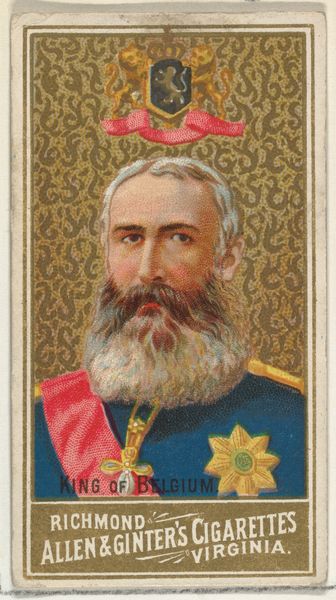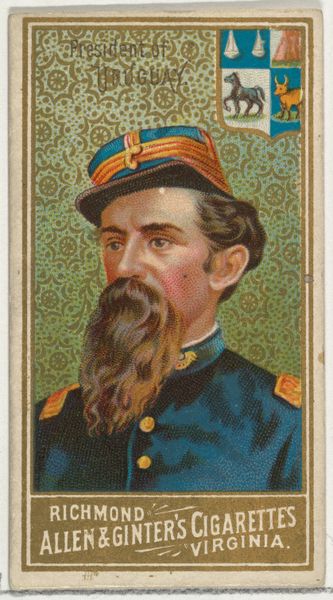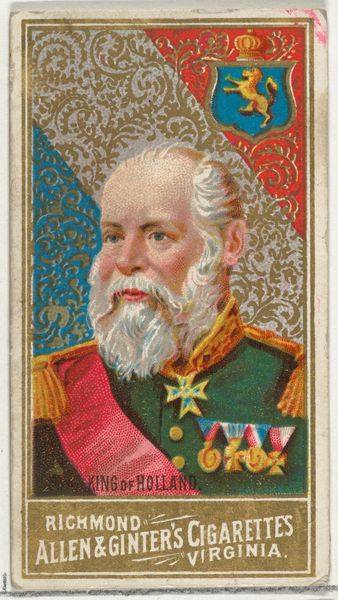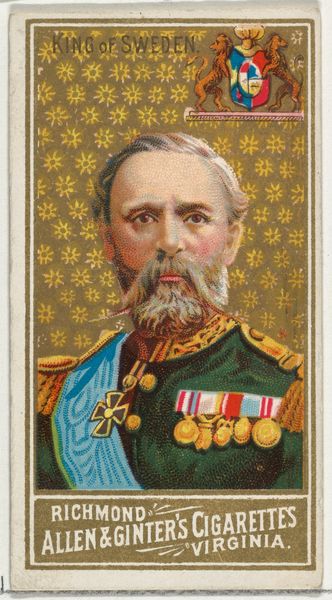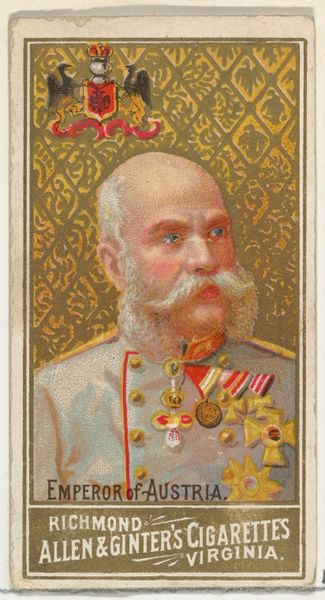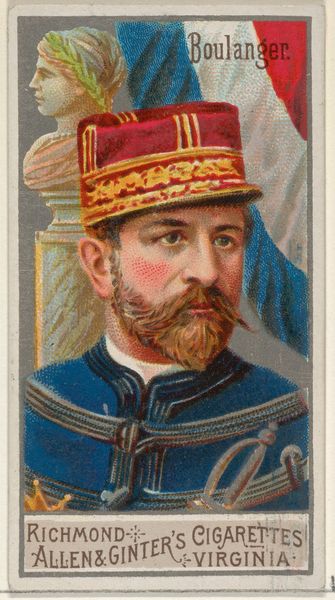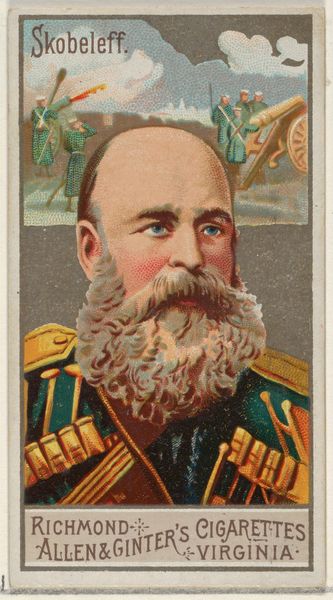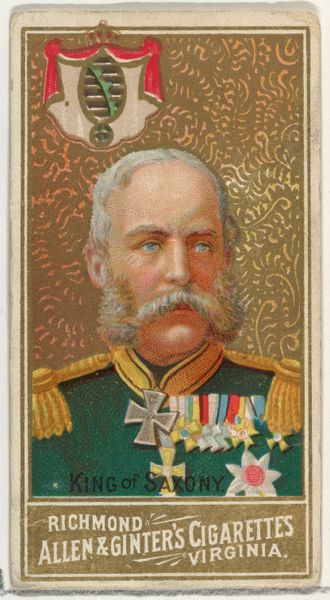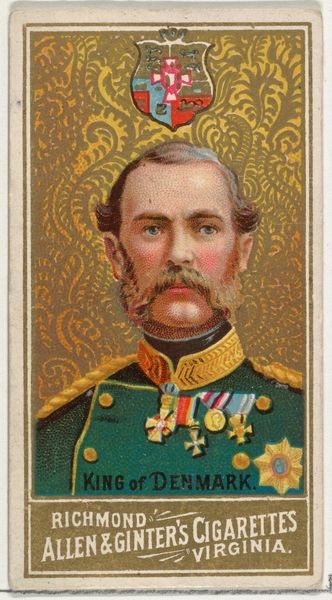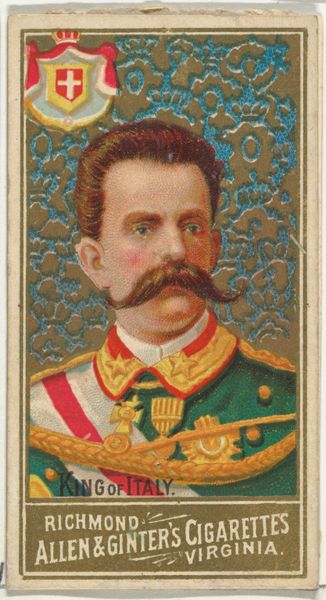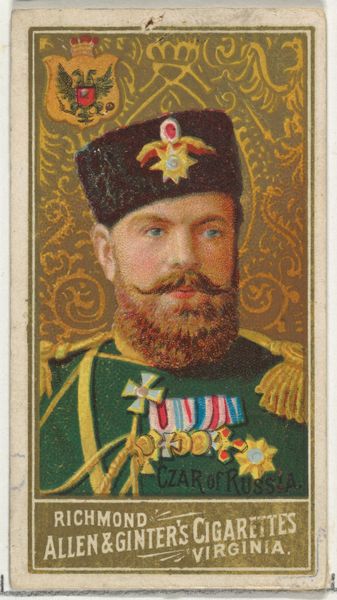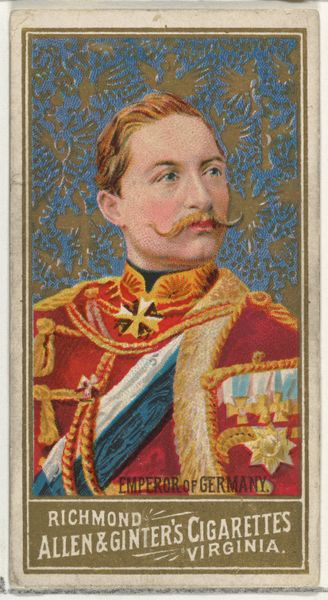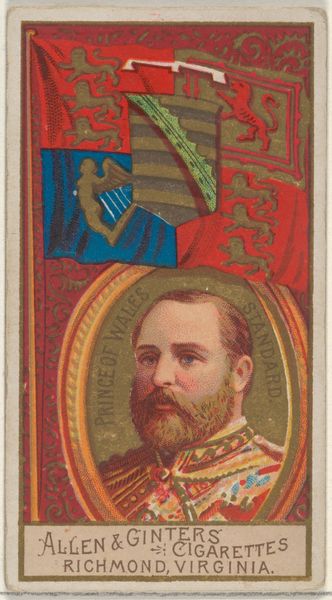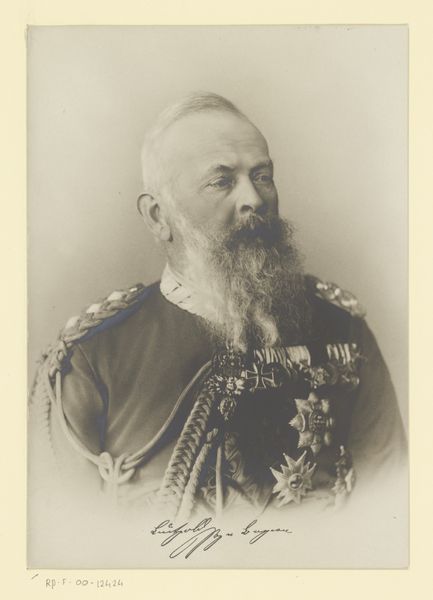
King of Romania, from World's Sovereigns series (N34) for Allen & Ginter Cigarettes 1889
0:00
0:00
drawing, lithograph, print, paper
#
portrait
#
drawing
#
lithograph
# print
#
caricature
#
figuration
#
paper
Dimensions: Sheet: 2 3/4 x 1 1/2 in. (7 x 3.8 cm)
Copyright: Public Domain
Editor: This is "King of Romania, from World's Sovereigns series" created in 1889 by Allen & Ginter. It's a lithograph printed on paper, one of those small cards that used to come with cigarettes. It feels very much like a caricature, almost comical. How do you interpret this work, given its historical context? Curator: This piece, though seemingly innocuous, sits at the intersection of commerce, colonialism, and idealized representations of power. These cigarette cards were tools of empire, weren't they? Allen & Ginter, by circulating images of “World Sovereigns,” visually reinforced a hierarchy of power. Who gets to be King? Who is deemed “sovereign?” And, importantly, who is consuming these images, and what are they internalizing about global power structures? Editor: So it's not just a picture, it's also reinforcing existing inequalities? Curator: Precisely! Consider the very act of collecting and trading these cards. It mirrors, in a smaller scale, the colonial project itself: the collecting of lands, resources, and peoples. This image of the King of Romania is part of a larger narrative of legitimizing certain forms of rule while erasing or marginalizing others. Think about how images, then and now, shape our perceptions of different nations and leaders. Does the medium itself -- a small, easily-discarded card packaged with an addictive substance -- contribute to the way these leaders were viewed? Editor: That’s a perspective I hadn't considered before. So, looking at the King’s portrait, his beard, the medals... are these elements designed to project an image of power that might be misleading? Curator: The medals, the meticulously rendered beard, even the regal colors all contribute to a carefully constructed image of authority and legitimacy. We have to question whose interests that image ultimately serves and whose stories are left untold. Editor: That's fascinating! I see it so differently now. It makes you think about the role of images in perpetuating dominant ideologies. Curator: Exactly. And by understanding that, we can begin to deconstruct the power dynamics embedded within seemingly simple images.
Comments
No comments
Be the first to comment and join the conversation on the ultimate creative platform.
